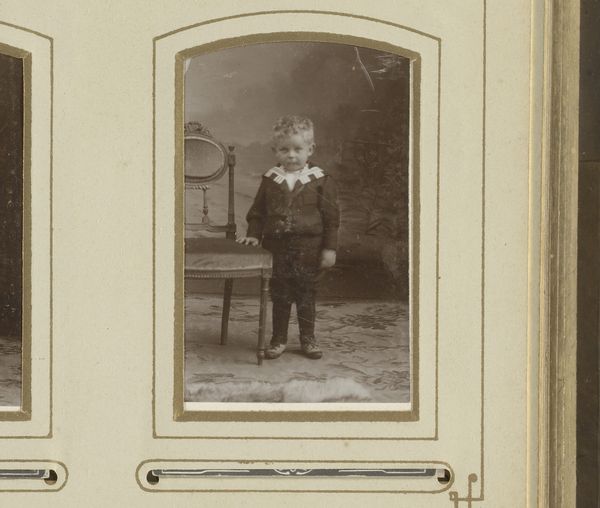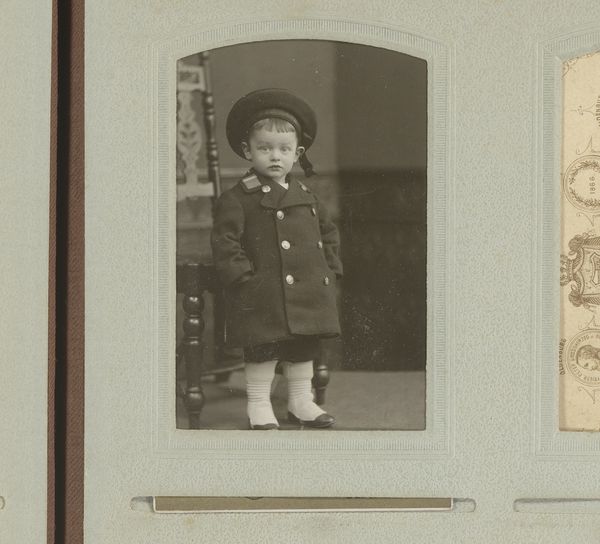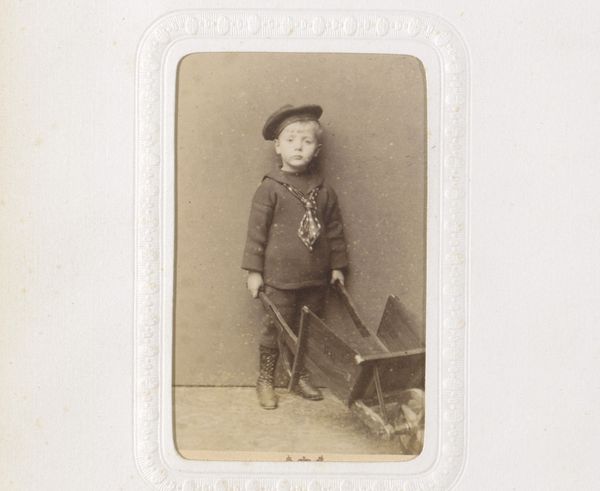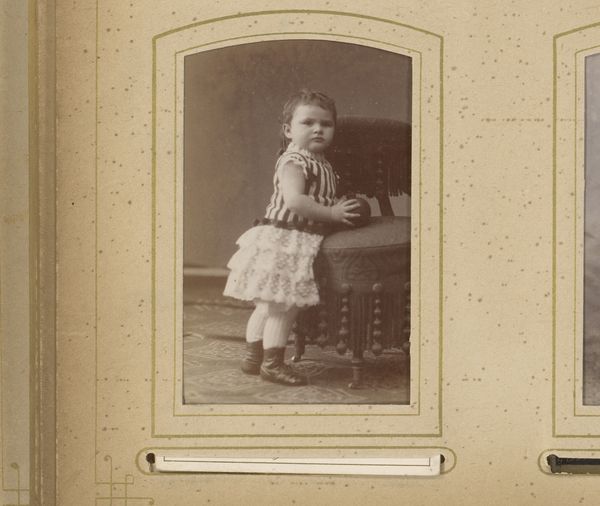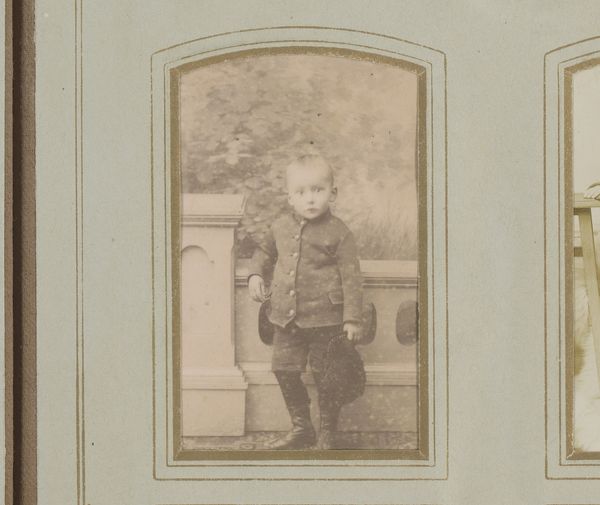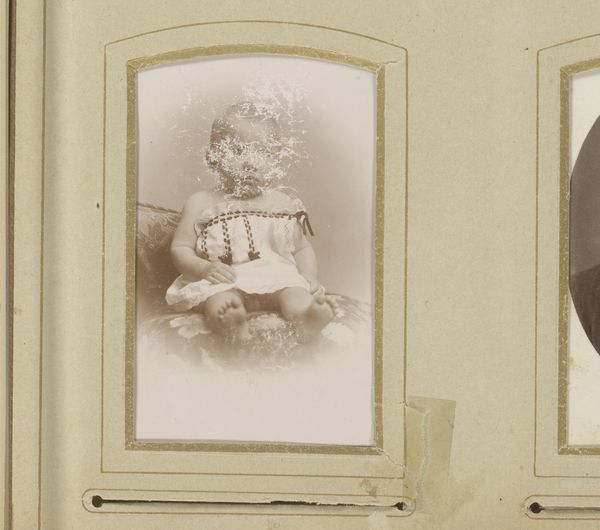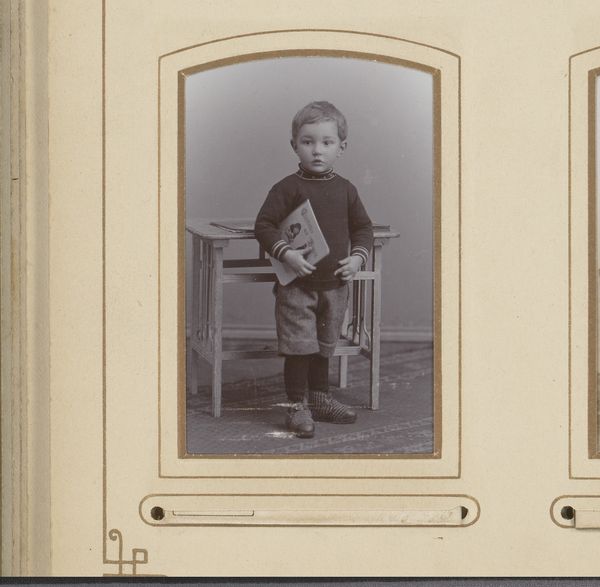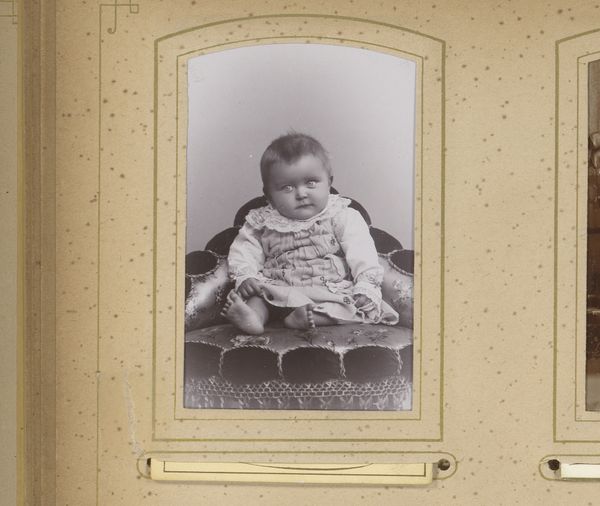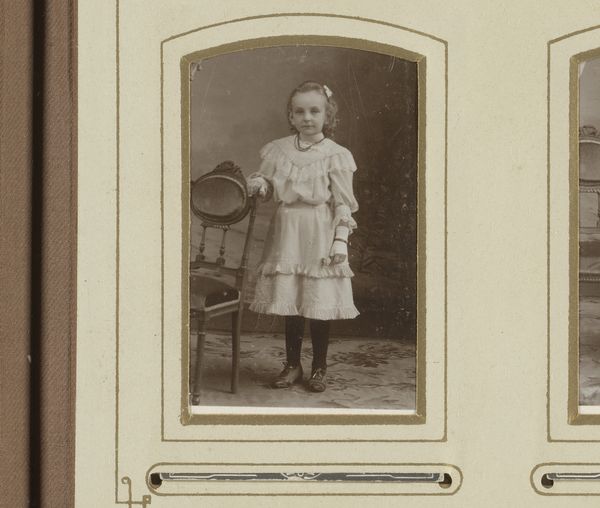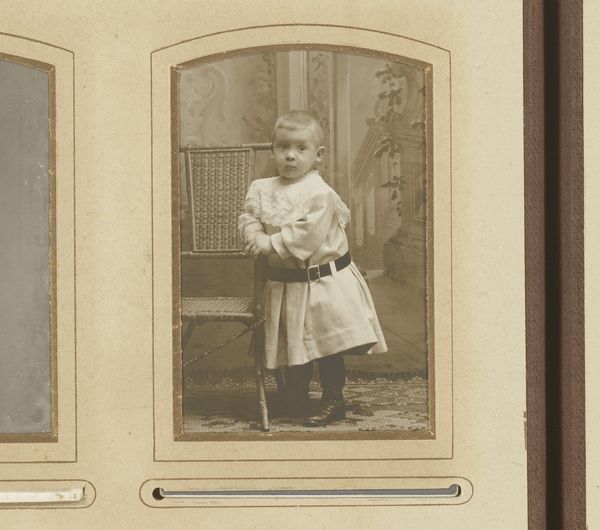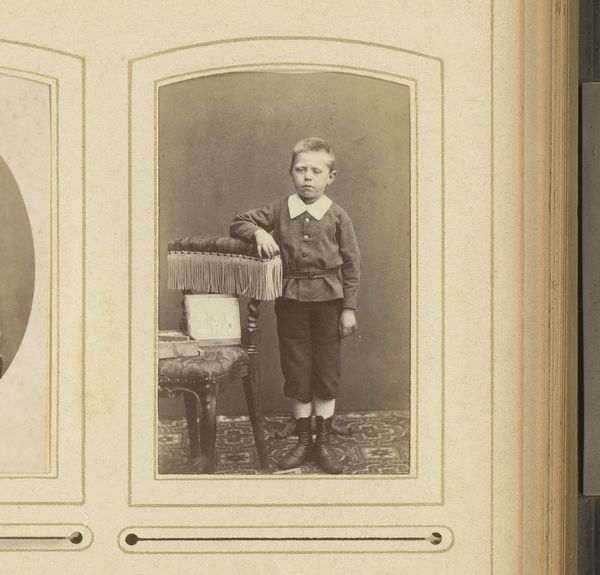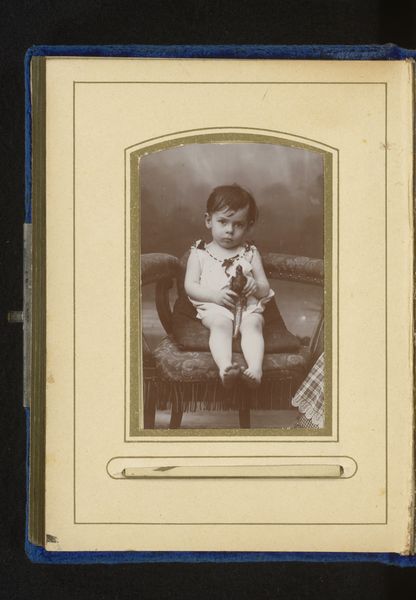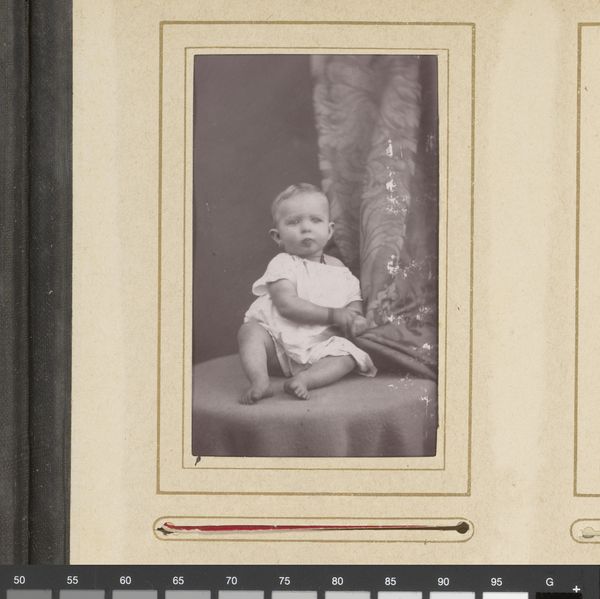
photography
#
portrait
#
sculpture
#
charcoal drawing
#
photography
#
genre-painting
Dimensions: height 84 mm, width 53 mm
Copyright: Rijks Museum: Open Domain
Curator: Here we have "Portret van een jongen met hoed en stok," or "Portrait of a boy with hat and stick," created by Louis Robert Werner sometime between 1878 and 1886. It's a photograph housed here at the Rijksmuseum. Editor: Immediately, the image conveys a sense of staged innocence. The boy, dressed in formal attire and holding what appears to be a walking stick, seems almost like a miniature adult, caught in the trappings of late 19th-century social expectations. There is also a slightly melancholic or pensive feel to his expression, an early experience with gendered social norms of that time period. Curator: The formality is striking, isn’t it? This era saw a rise in portrait photography's accessibility, so images like this were ways for families to document and, indeed, perform their social standing. Notice the carefully chosen attire, perhaps meant to mimic a military style, and that decorative stick, signaling sophistication even in youth. Editor: Yes, and there's something quite unsettling about that performance, especially when imposed on a child. I see a commentary on the pressures placed upon boys to conform to a masculine ideal – the hat, the coat, the cane – these become symbolic weights. How complicit was he in wanting these signifiers of power? Did his family enable his costuming or did he request it? We will likely never know the full story, but we can only surmise given what history taught us about parenting standards during this period. Curator: Precisely. The photograph serves as both a personal memento and a cultural artifact. It captures a moment, but also reveals the broader societal structures influencing how children, especially boys, were presented and perceived. This careful curation of identity speaks volumes about the social anxieties and aspirations of the time. What's so fascinating is how those societal pressures and gender performances still exist today! Editor: And that’s why this seemingly simple portrait holds such power. It invites us to question not only the historical context but also the contemporary echoes of these imposed identities, especially regarding boys' early development. I mean, what are boys now supposed to perform in today's day and age? Curator: Absolutely. Examining pieces like Werner's work helps us reflect on how much has changed, and, perhaps more importantly, how much remains the same. These historical portraits invite us to analyze the cyclical re-imposition of identities onto each new generation.
Comments
No comments
Be the first to comment and join the conversation on the ultimate creative platform.
